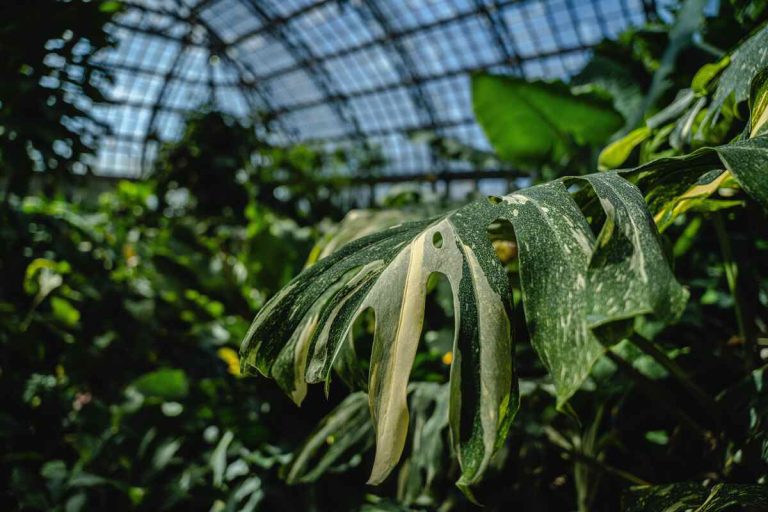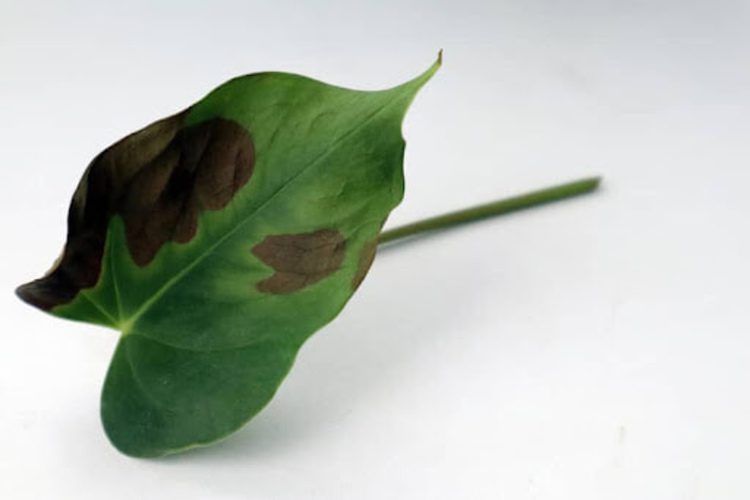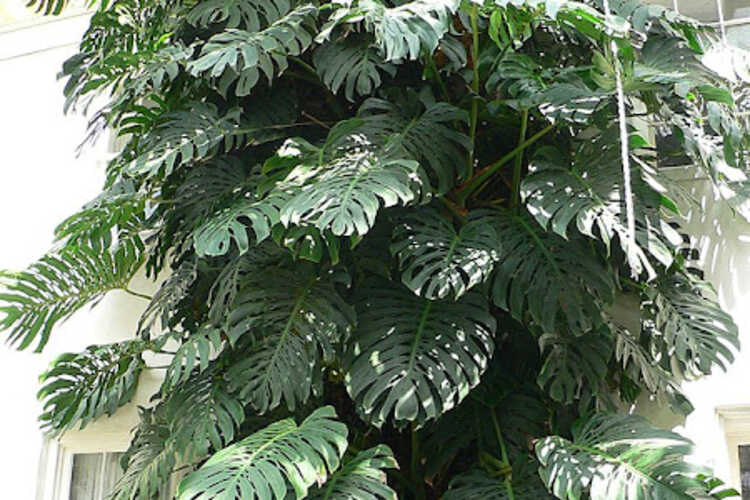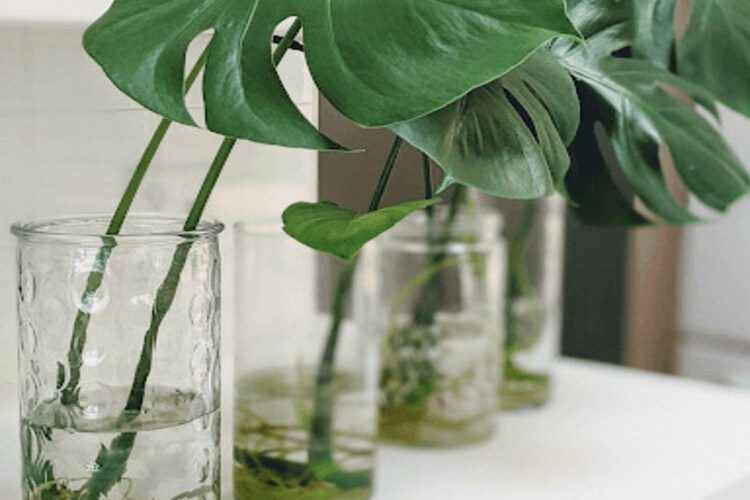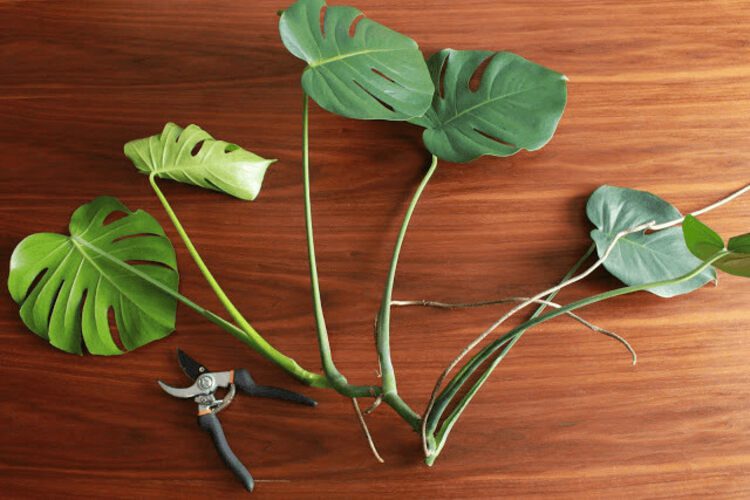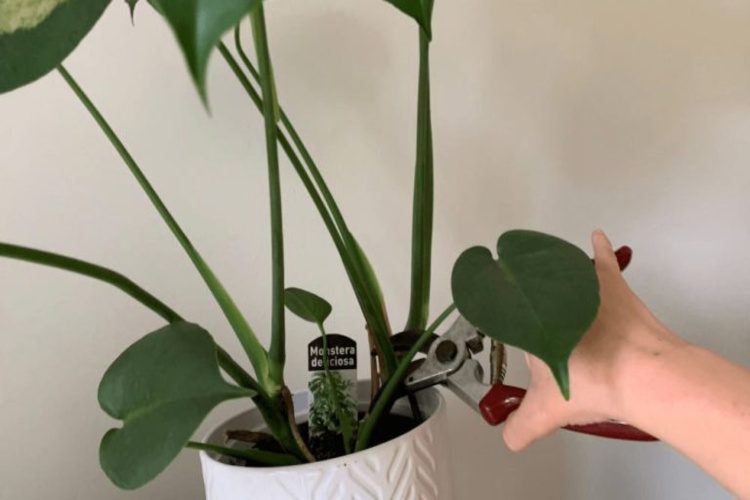How To Make Monstera Grow Faster: 6 Tips For Its Growth
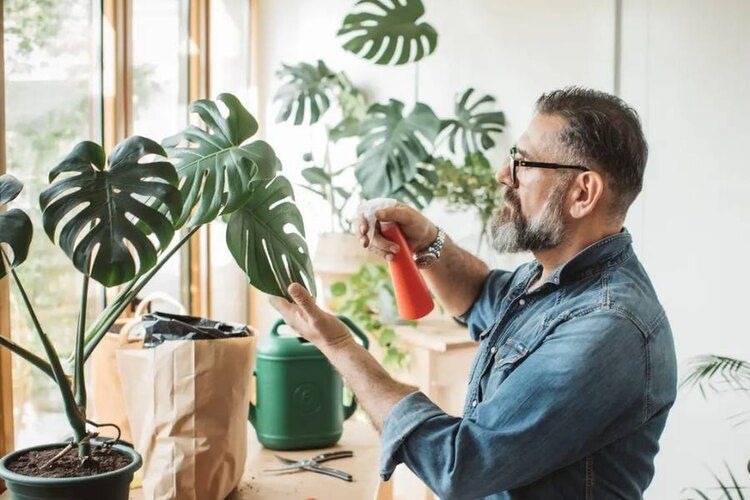
This post is for you if you’ve been asking how to make Monstera grow faster. I’ll explain how to hasten its growth. What are the finest methods for accelerating your plant? Make sure it gets enough sunshine to help it develop. It also requires appropriate water, lots of humidity, the right Monstera Deliciosa pot size, clean leaves, and fertilizer to grow faster.
In this quick-growing guide, I’ll go into much more depth on each point above so you can watch the Swiss cheese plant achieve its maximum potential sooner.
Continue reading so that I can explain how large and broad you may anticipate it to develop.
How To Make Monstera Grow Faster
There are 6 ways to make your Monstera grow faster: Provide more sunlight, water when the soil is dry, increase humidity, clean the leaves, repot them, and fertilize them monthly.
Add More Sunlight
What sort of illumination is necessary for the Monstera to grow? That would be direct sunshine. Indirect sunlight differs from direct sunlight in that there is usually a barrier between the sunshine and your plant.
Even though it has large leaves when grown, it cannot resist direct sunlight. The curtain protects the plant from too much direct sunlight. Its fenestrated leaves have the potential to develop bleached-looking white patches. Those blemishes turn brown or black. The plant’s development may slow down or cease, and its leaves may also start to droop. It needs 5-8 hours of indirect light daily.
It will receive precisely the right amount of light without the danger of burning if you have a window facing east or north with a curtain. Install an external grow lamp for your plant if you don’t receive much sunshine daily, such as during the winter. Supplying both natural and artificial light will be equally effective.
The Swiss cheese plant isn’t getting enough light if its leaves aren’t splitting to form those distinctive holes or fenestrations. The Monstera searches for illumination. The lighting for the plant must be increased immediately to witness significant lengthwise development.
Water When The Several Inches Deep Soil Dries Out
The soil must be barely damp and allowed to dry out. After the top two inches of soil have dried up, water the Monstera once more. How can you tell whether the ground is dry? Sticking one or two clean fingers inside the Monstera pot and checking for moisture. You can delay for a maximum of 4 inches of dryness, but not more.
You will only water the Monstera when it needs it if you do a soil moisture test in this manner. Your plant will flourish and develop. Overwatering is very susceptible to it. Many signs of underwatering and overwatering a plant are the same.
An extremely unpleasant stench and apparent surface mold are two unusual signs of overwatering. Both signs point to root rot, a fungal infection that develops when plants are left in damp conditions for an extended period. A Monstera with root rot not only won’t be able to grow anymore, but it may even pass away.
Increase Humidity By More Than 40%
What level of humidity are you giving your Monstera? You need a hygrometer to provide an answer to that. A hygrometer may be used to gauge wetness. The plant prefers humidity levels of at least 40% and 60%. Because of this, if you’re unhappy with how rapidly the Swiss cheese plant has developed, consider raising its humidity!
As you test, you’ll see that most interior locations don’t have higher than 50% relative humidity levels. Moving the plant to your bathroom is one method, especially if you are growing it at home.
Clean The Leaves
After all, whether you cultivate your plant indoors or outdoors, the atmosphere is full of debris that might drop on the leaves, including dust, grime, and other impurities. The plant will find it difficult to absorb sunlight if muck is on the leaves. How effectively it can photosynthesize is impacted by this.
A gentle microfiber cloth is required to keep these leaves clean. Rub the cloth on the leaves on top and bottom after lightly moistening them. While cleaning, support the leaf lightly with your free hand to prevent accidentally injuring the Monstera stem by applying too much pressure. About once a week, clean the leaves in this way.
Carefully separate your Monstera from your pets when cleaning since this plant is toxic for cats and other pets. Therefore, it’s best to keep your Monstera plant out of their reach or consider choosing a different plant that is safe.
Repot Every Two Years
Every indoor plant ultimately outgrows the pot it is in; it’s a fact of life. Once you create its habitat, that day will arrive for the Monstera, maybe in two to three years.
Another sign that you must repot the plant immediately is if you notice roots sticking out of the drainage holes. Slowed or halted growth is another indication that it’s time to modernize. Even though it’s tempting to always buy a bigger pot, kindly resist the urge. A pot is more likely to topple when it is bigger than the plant inside.
The liquid in the container dries up more slowly due to additional dirt. Root rot might result from this. When should the Monstera be repotted? The optimal time to plant is in the spring, just before the plant’s active growing season begins. After the transfer, the Swiss cheese plant can undergo some transplant stress. If you leave it alone for some time, it should finally recover its health.
Fertilize A Minimum Of Monthly
Like other plants, the Monstera requires varying amounts of three macronutrients—nitrogen, phosphorus, and potassium. The correct plant formula is 3-1-2. That is composed of two parts potassium, 1 part phosphorus, and three parts nitrogen. A higher proportion of nitrogen follows the ratio of potassium to phosphorus.
How frequently should the Monstera be fertilized? Some people who grow them indoors choose to fertilize them every two weeks. Just be careful not to use too much fertilizer. Although fertilizer contains a variety of macro- and micronutrients that developing plants such as Monstera require, excessive amounts of a good thing might nevertheless turn out to be harmful.
If you are not sure how often to fertilize your Monstera, it is always best to err on the side of caution and fertilize less often. You can also consider buying fertilizer that is specifically designed for Monstera plants. This will help ensure that you are giving your plant the nutrients it needs without overdoing it.
Does Monstera Natural Grow Fast In?
Yes, Monstera has a strong root system, so they can grow up to 1-2 feet per year. Even if you buy your plant from the same supplier as your buddy at the same time, its development won’t exactly match theirs!
Each of these parts affects its general health and growth, and each one will uniquely meet these demands. The essential requirements are, like those of other tropical kinds:
- Aeration (drainage)
- Wholesome soil
- Water
- Sunlight
Let’s imagine that you constantly and flawlessly satisfy each of these requirements. Monstera grows between one and two feet each year. Further broken down, it will expand by at least a third of an inch daily. Their wild cousins are responsible for its abundant growth. These clinging things may reach lofty heights of up to 70 feet!
How Often Do Monstera Grow New Leaves?
Monsteras are tropical houseplants that grow quickly and can reach heights of up to 10 feet. They have large, glossy leaves that make them a popular choice for indoor gardens.
They typically grow new leaves every four to six weeks. However, this can vary depending on age, size, and growing conditions. The frequency with which a Monstera produces new leaves can also be affected by the season. For example, young plants or those that are actively growing may produce new leaves more frequently than mature plants.
Additionally, a plant may produce new leaves more slowly if stressed due to a lack of water or nutrients. When conditions are ideal for growing in the spring and summer, most plants will put out new leaves more regularly than in the fall and winter. This is because longer days and warmer temperatures stimulate growth.
How Big Do Monstera Get?
Monsteras are known for their enormous heights in the wild. Their aerial roots will anchor them deeply into any surface instead of just relying on normal root systems, which allow these plants access no matter where you place them. The ambitions of your monstera will be sustained by creating a moss pole. Aerial roots from the plant’s growth can grow into it and make their way down to anchor themselves in place while reaching heights of 10 feet above ground level or more.
These plants are long-lived, and depending on their care, they can reach heights of 10 to 15 feet indoors. They have leaves that measure at least 18 inches broad. Indoors, it is prone to slow growth. As your monstera grows, you’ll see that the leaves are periodically split and holes develop in them. This happens because of their natural process to make room for new growth underneath it; however, this can be inhibited by low light levels.
Read more: Can Monstera Live Outside? Detailed Guides To Acclimatize It
Conclusion
If you want to find out how to make Monstera grow faster, ensure it gets enough light and water. Additionally, fertilize it regularly, and consider repotting it every one or two years. Finally, prune it back when necessary to encourage new growth. With a little care, it will soon be thriving!
FAQs


